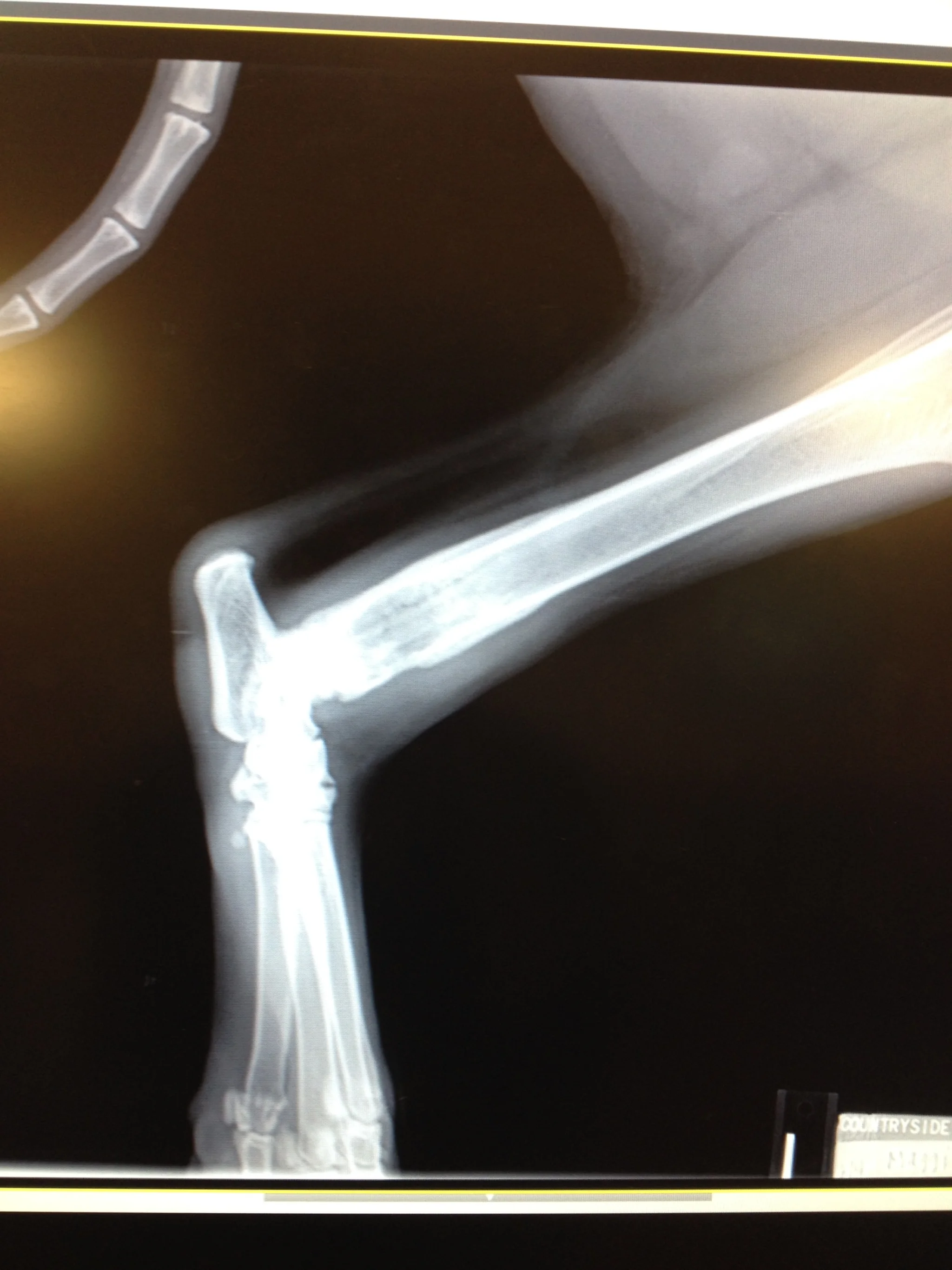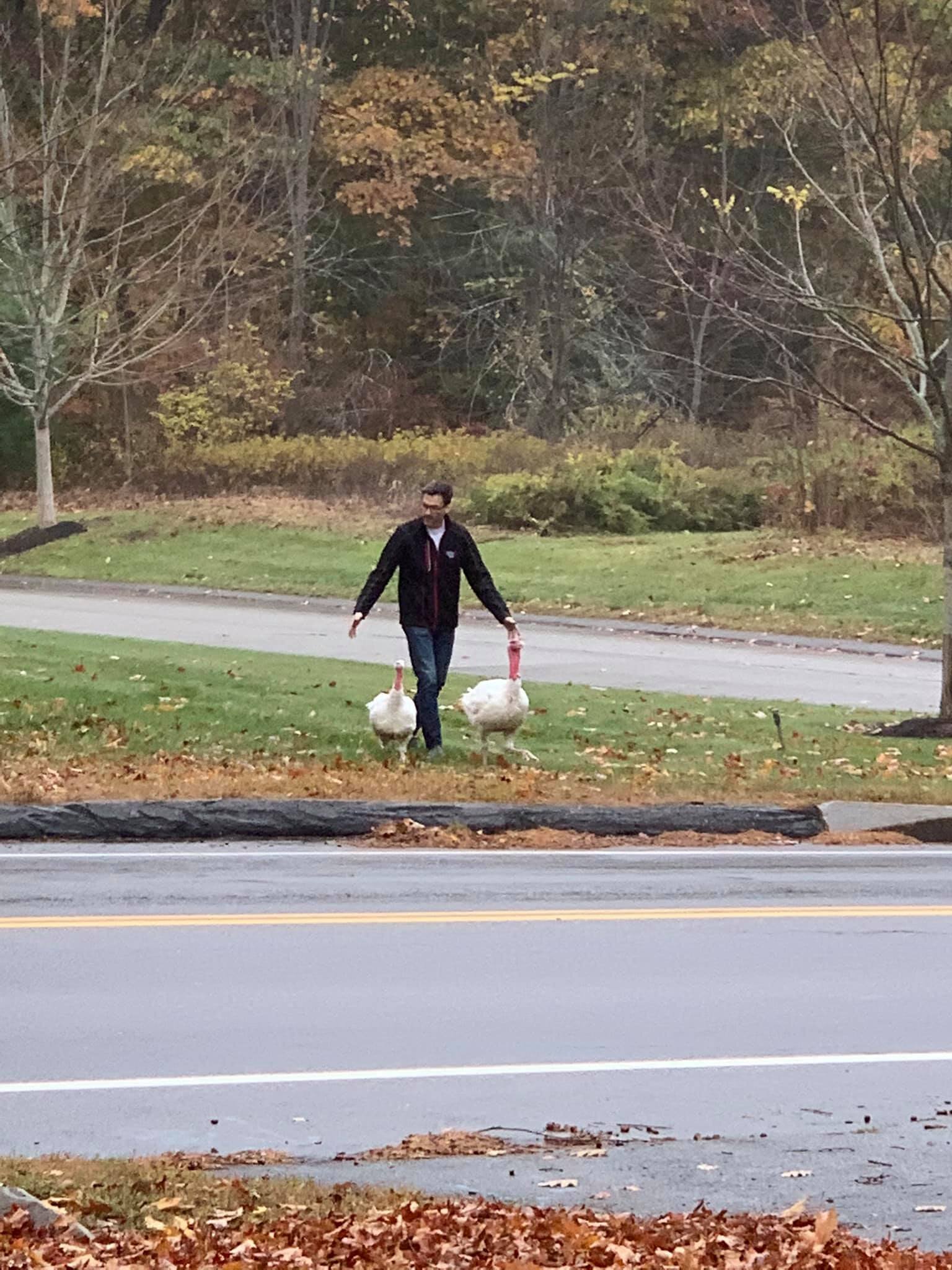Osteo sarcoma is Latin for "This sucks"
/A few weeks ago, I was traveling out west. I got a call from home.
That part isn't really all that surprising. My Bride and I usually speak two or three times a day, even when I'm not traveling. Some of our friends are surprised. I'm not sure why. This lady is my best friend. We check in. Sometimes just for a few minutes. And sometimes just to shoot the breeze in some down time. Or to laugh about something one of the kids just did. Or just to laugh at the kids. Because that's one of the perks of being a parent.
This wasn't one of those calls.
Our sweet, slobbery, six year old giant of a dog, Maggie, had come up lame.
For a 140 pounds dog on permanent medication for a variety of ailments, Maggie's always been surprisingly healthy. Oh, sure. She's incontinent. ("Just a little bit," said the vet. She's 140 pounds. nothing this dog does is little). So she takes a twice-a-day dose of a minor amphetamine that was banned for human consumption as it occasionally caused strokes in young women. But - if taken every day at morning and evening meals with their kibble - it also cures incontinence in dogs! So, woo hoo for the drugs!
She also has a rotten nose. Or proliferative arteritis. Which is a genetic condition that apparently only affects a minority of St. Bernards, Newfoundlands and Giant Schnauzers. Her nose has a deep crack that splits, bleeds, scabs, and then repeats. Even though her nose has been rotting from the center out for years now, it doesn't seem to cause her much discomfort, and only occasionally is the bleeding more than a little seepage. But when it is, she looks like she just turned our neighbor's cockapoo into a light, bloody snack.
She was on medication for this for a couple of years - some combination of fish-oil and steroids. It didn't actually do anything to heal the issue, it being genetic and all. So eventually, we more or less gave up the steroids part, and just settled on the cheaper fish oil pills. If nothing else, it kept her coat shiny.
When my Bride called to tell me the dog was limping, I wasn't too worried. She hurts herself occasionally. A couple of years ago, she struggled to stand, and when she did, she couldn't turn to the left without whining. She had pinched a nerve or pulled a muscle in her neck, playing with the Boy. The vet gave her muscle relaxers, and for a couple of days, she was one very mellow dog. Then she was fine.
So my Bride helped her limp into the car, and took her in for an x-ray.
There's a spot on the leg, right above the joint there that's swollen and a little brighter. That spot is a very bad sign.
One biopsy later, and the vet told us: It's osteo sarcoma. A bone cancer that advances rapidly, and metastasizes readily into the lungs and other parts of the body. Left untreated, that swelling will increase, and soon weaken the bone to the point where a very painful fracture is likely. And that's if the cancer doesn't spread to other areas faster than the bone weakens.
Options?
"You're going to want to amputate and put her on chemotherapy."
And that cures things?
"Well. No. But it takes away the most painful spot, and will give her a few more months."
Hmm. I love this dog. But a treatment of ten thousand dollars or more, a long recovery, and we're only buying a few months of slow decline? What else do you have on that list?
The vet clearly had some pause that we weren't ready to sign on for the most aggressive treatment.
Look. I love this dog. This is, by far and away, the best dog I have ever had in my life. This dog is easier to train, more loyal, and more integrated into our family and daily lives than any animal we've ever owned.
But she's a dog. If we were talking a treatment option that would give us a couple more years with her, I might consider it. Maybe. But I can't get behind radical surgery & treatment that will cause her more misery, cost 5x the cost of the dog, and give us a handful more months of sad, sickly companionship.
Besides which, it's because I like this dog so much that I don't want to put her through that.
The alternative options are either: B) targeted, palliative radiation to ease the discomfort and some accompanying drugs to slow the breakdown of the bone, or C) just pain killers to help mitigate the discomfort.
With the first, we get 3-6 months. With the second, maybe a couple of months.
These choices all pretty much suck.
We weren't ready to take her leg and do the full on chemo, but we did opt for the palliative radiation. It's a course of three doses, and we're two treatments in.
Some days are better than others for her, and there's hardly a limp. Her appetite is down, but she's still eating and drinking. And she still wags her tell and comes trotting over to see me when I get home. The kids are extra gentle with her, and give her all the attention she can stand. We're teaching her terrible habits at this point - to make sure she takes the medicine at each meal, we're slipping it into a little peanut butter sandwich, or drenching her food with the gravy from dinner. That goes against what we've done most of her life, but at this point, what the hell.
Sometimes, I can tell that she's feeling it - she follows me around the house so closely that her cheek rests on my thigh at every step, just wanting to be near. She's lost 10 pounds since the treatment began, despite the extra peanut butter medicine time. And sometimes, I catch her with her leg up in the air, or in a limp down the stairs. But she's still game, and still enjoying life.
At some point in the very near future, we're going to have to make a decision about when her pain outweighs her enjoyment. She can't speak to tell us when that point comes. But I'm pretty sure she'll be able to tell me in her own way.














